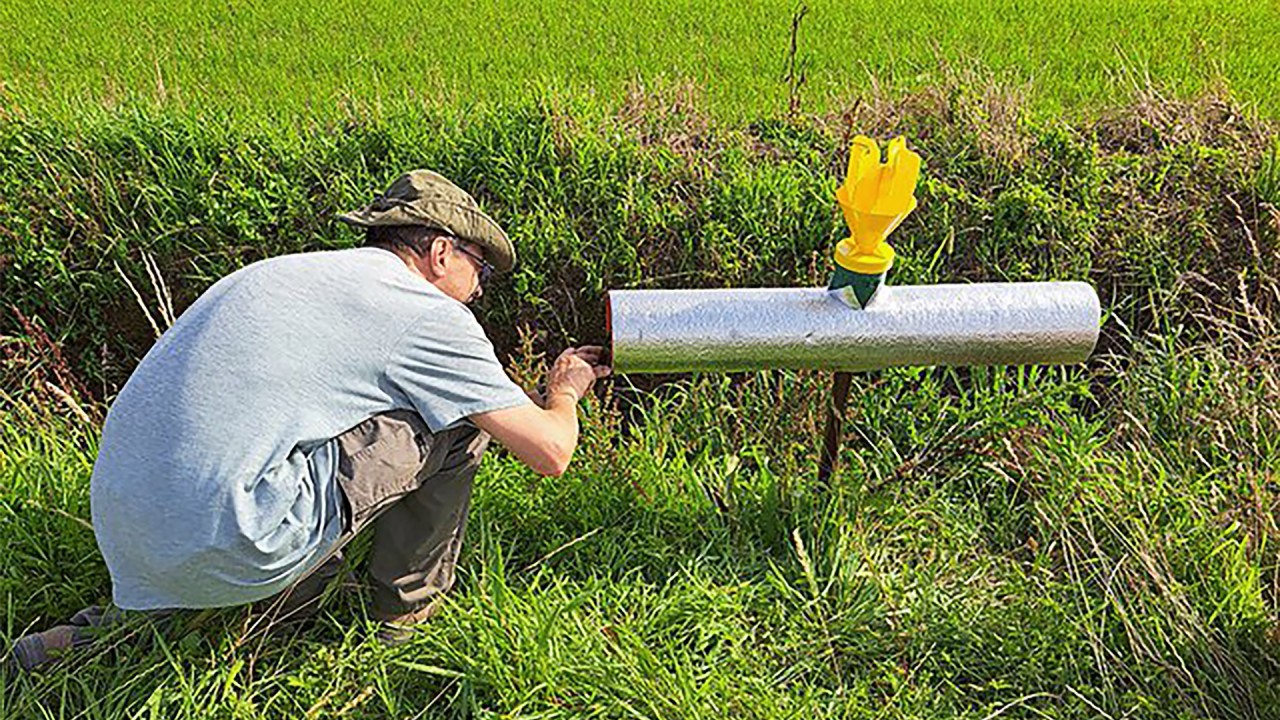Young minds got it right!
In fact, the Fungzuka device is being tested by CREA's researchers since summer 2023. The "Fungzuka" is an "Attract-Infest-Release" device that is conceived to bring adult Popillia japonica insects in contact with the spores of an entomopathogenic fungus and let them fly away carrying with them their killer! Since Japanese beetle adults mate frequently and feed in close contact with one another, a single infected beetle can spread the fungus to multiple healthy individuals. As the fungus takes several days to kill its host, there is large opportunity for transmission. If the contaminated Popillia is a female one, it can also take the fungus to its oviposition sites and infect its progeny. Early field trials have shown promise. The fungal spores were recovered from insects collected up to 500 meters away from the "Fungzuka" device. Identifying the most effective fungal strain for large-scale use is the subject of the ongoing research.
This is how Japanese beetles collect spores inside the Fungzuka
Related Posts
By accepting you will be accessing a service provided by a third-party external to https://www.popillia.eu/





